











|
History
of Anchor Hocking
Anchor
Hocking first came into existence when Isaac J. Collins and six friends
raised $8,000 to buy the Lancaster Carbon Company, Lancaster, Ohio, when
it went into receivership in 1905. The company's facility was known as
the Black Cat from all the carbon dust. Mr. Collins, a native of Salisbury,
Maryland, had been working in the decorating department of the Ohio Flint
Glass Company when this opportunity arose. Unfortunately the $8,000 that
was raised was not sufficient to purchase and operate the new company,
so Mr. Collins enlisted the help of Mr. E. B. Good. With a check for $17,000
provided by Mr. Good, one building, two day-tanks, and 50 employees, Mr.
Collins was able to begin Hocking Glass Company operations at the Hocking
Glass Company.
The
company, named for the Hocking River near which the plant was located,
made and sold approximately $20,000 worth of glassware in the first year.
Production was expanded with the purchase of another day-tank. This project
was funded by selling $5,000 in stock to Thomas Fulton, who was to become
the Secretary-Treasurer.
Just
when everything seemed to be going well, tragedy struck the company in
1924 when the Black Cat was reduced to ashes by a tremendous fire. Mr.
Collins and his associates were not discouraged. They managed to raise
the funding to build what is known as Plant 1 on top of the ashes of the
Black Cat. This facility was specifically designed for the production
of glassware. Later in that same year, the company also purchased controlling
interest in the Lancaster Glass Company (later called Plant 2) and the
Standard Glass Manufacturing Company with plants in Bremen and Canal Winchester,
Ohio.
The
development of a revolutionary machine that pressed glass automatically
would save the company when the Great Depression hit. The new machine
raised production rates from 1 item per minute to over 30 items per minute.
When the 1929 stock market crash hit, the company responded by developing
a 15-mold machine that could produce 90 pieces of blown glass per minute.
This allowed the company to sell tumblers "two for a nickel"
and survive the depression when so many other companies vanished.
Hocking
Glass Company entered the glass container business in 1931 with the purchase
of 50% of the General Glass Company, which in turn acquired Turner Glass
Company of Winchester, Indiana. In 1934, Hocking and its subsidiary developed
the first one-way beer bottle.
Anchor
Hocking Glass Corporation came into existence on December 31, 1937 when
the Anchor Cap and Closure Corporation and its subsidiaries merged with
the Hocking Glass Company. The Anchor Cap and Closure Corporation had
closure plants in Long Island City, New York and Toronto, Canada, and
glass container plants in Salem, New Jersey and Connellsville, Pennsylvania.
Anchor
Hocking Glass Corporation continued to expand into other areas of production
such as tableware, closure and sealing machinery, and toiletries and cosmetic
containers through the expansion of existing facilities and the purchase
of Baltimore, Maryland based Carr-Lowry Glass Company and the west coast
Maywood Glass. In the 1950s, the corporation established the Research
and Development Center in Lancaster, Ohio, purchased the Tropical Glass
and Container Company in Jacksonville, Florida, and built a new facility
in San Leandro, California in 1959.
In
1962, the company built a new glass container plant in Houston, Texas
while also adding a second unit to the Research and Development Center,
known as the General Development Laboratory. In 1963 Zanesville Mold Company
in Ohio became an Anchor Hocking Corporation subsidiary. The company designed
and manufactured mold equipment for Anchor Hocking.
The
word "Glass" was dropped from the company's name in 1969 because
the company had evolved into an international company with an infinite
product list. They had entered the plastic market in 1968 with the acquisition
of Plastics Incorporated in St. Paul, Minnesota. They continued to expand
their presence in the plastic container market with the construction of
a plant in Springdale, Ohio. This plant was designed to produce blown
mold plastic containers. Anchor Hocking Corporation entered the lighting
field in September 1970 with the purchase of Phoenix Glass Company in
Monaca, Pennsylvania. They also bought the Taylor, Smith & Taylor
Company, located in Chester, West Virginia, to make earthenware, fine
stoneware, institutional china dinnerware, and commemorative collector
plates.
Over
the years, several changes occurred in the company. Phoenix Glass Company
was destroyed by fire on 15 July 1978, Shenango China (new Castle, Pennsylvania)
was purchased in 28 March 1979, Taylor, Smith & Taylor was sold on
30 September 1981, and on 1 April 1983 the company's decided to divest
its interest in the Glass Container Division to an affiliate of the Wesray
Corporation. The Glass Container Division was to be known as the Anchor
Glass Container Corporation with seven manufacturing plants and its office
in Lancaster, Ohio.
The
Newell Corporation acquired the Anchor Hocking Corporation on 2 July 1987.
With this renewed influx of capital, several facilities were upgraded
and some less profitable facilities were either closed or sold. The Clarksburg,
West Virginia, facility was closed in November 1987, Shenango China was
sold on 22 January 1988, and Carr-Lowry Glass was sold on 12 October 1989.
Today, Anchor Hocking enjoys the financial backing and resources as one
of the 18 decentralized Newell Companies that manufacture and market products
in four basic markets: house wares, hardware, home furnishings, and office
products. You may recognize such familiar Newell Companies such as Intercraft,
Levolor Home Fashions, Anchor Hocking Glass, Goody Products, Anchor Hocking
Specialty Glass, Sanford, Stuart Hall, Newell Home Furnishings, Amerock,
BerzOmatic, or Lee/Rowan.
Earlier
in 2001, Newell Corporation entered into negotiations with Libbey Glass
for the purchase and transfer of Anchor Hocking Glass Corporation. After
months of negotiations, Libbey Glass withdrew their offer in the midst
of serious objections by the federal government. Newell Corporation eventually
sold several of its businesses, including Anchor Hocking Glass Corporation,
to Global Home Products (GHP). GHP is owned by Cerberus Capital Management,
which specializes in turning around underperforming brands. Despite all
cost-cutting efforts in this weak economy, Global Home Products and Anchor
Hocking filed for Chapter 11 bankruptcy protection in April 2006 and the
Anchor Hocking assets were sold to a unit of Monomoy Capital Partners,
a New York-based private equity firm. The future of Anchor Hocking is
uncertain at this point in time.
Anchor Hocking and Other Confusing Markings
Anchor
Hocking basically used only three markings over its history. The original
"HG over Co" was used from 1905 until 1937, the "anchor
over H" used from 1937 until 1968, and the "anchor in the square"
mark used from 1968 until recently. The company has started using a stylizied
"anchor over H" in the last few years. The marks are pictured
below.
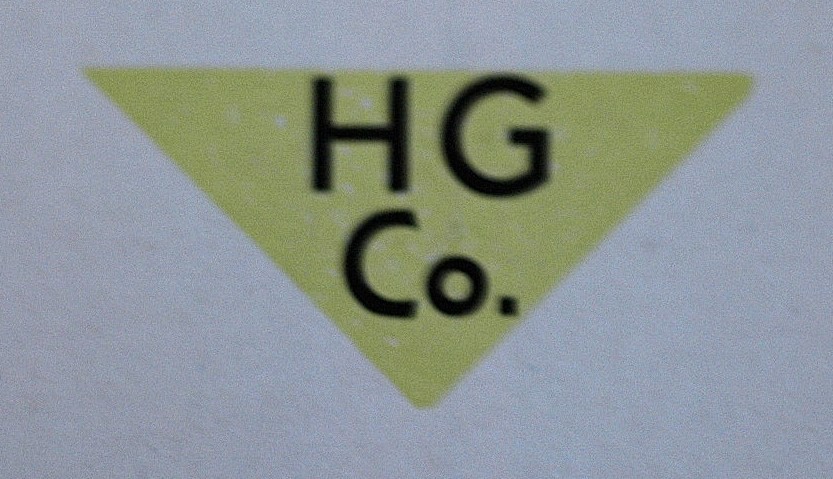 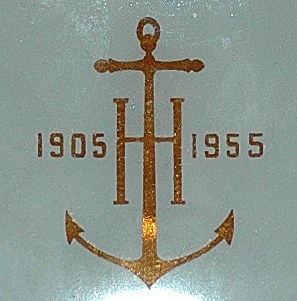 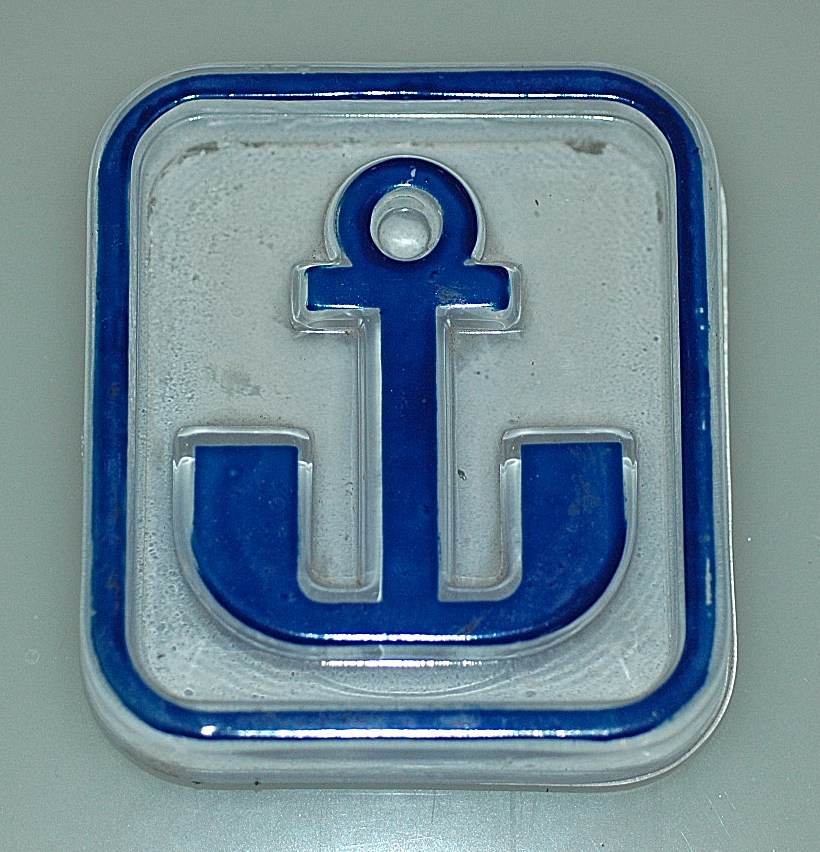
Federal Glass Company
The
"F in the shield" is often identified as Anchor Hocking's Fire
King; however, it is the mark of Federal Glass Company.
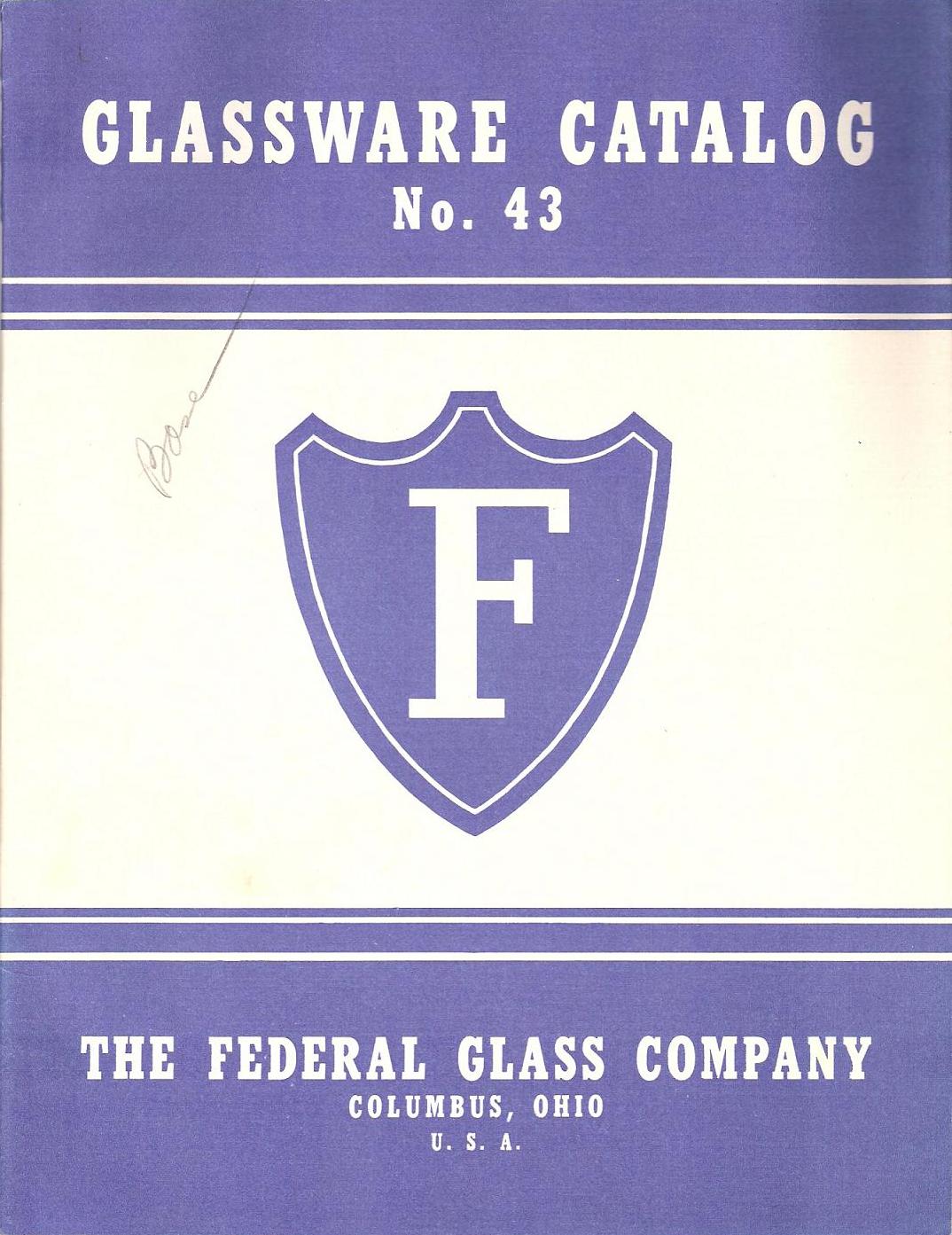
Hazel Atlas
The
"large H over the small A" mark is one of the most common mis-identifications.
The emblem was used by the Hazel Atlas Glass Company and not Anchor Hocking.
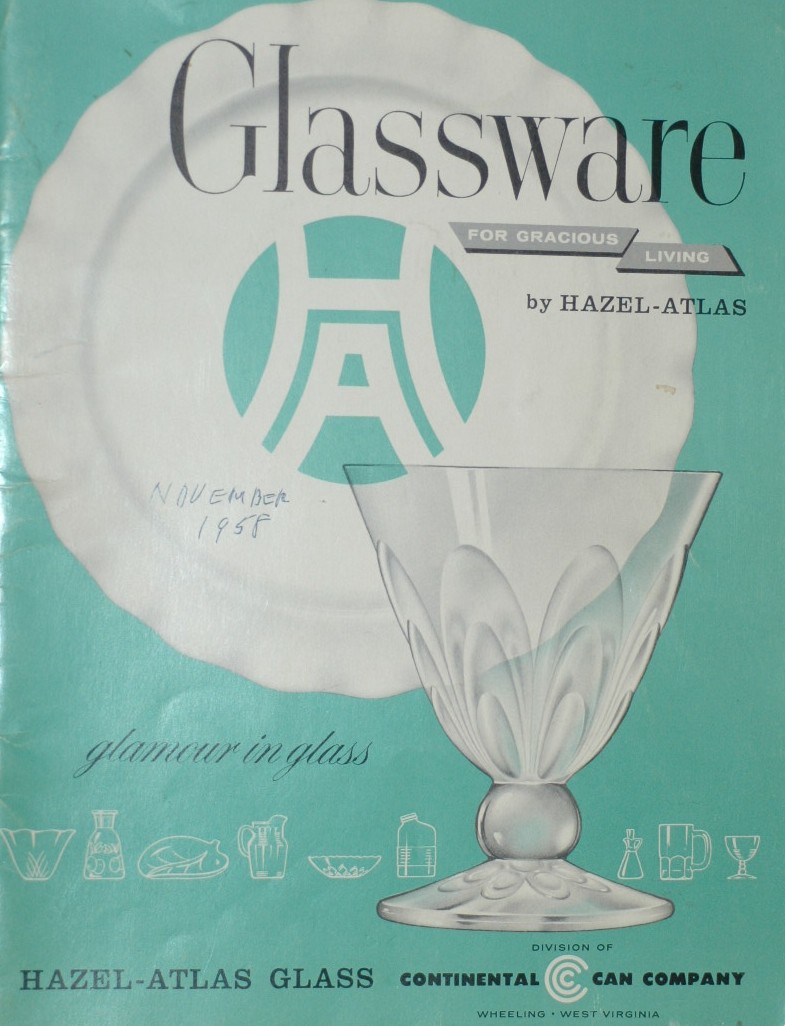
Anchor
Glass Container Company
This
company has both a confusing name and emblem. To add to the problem, Anchor
Glass Container Company now occupies many former Anchor Hocking Glass
Company plants. The sign below was photographed on the Salem, NJ former
plant for Anchor Hocking Glass Company.
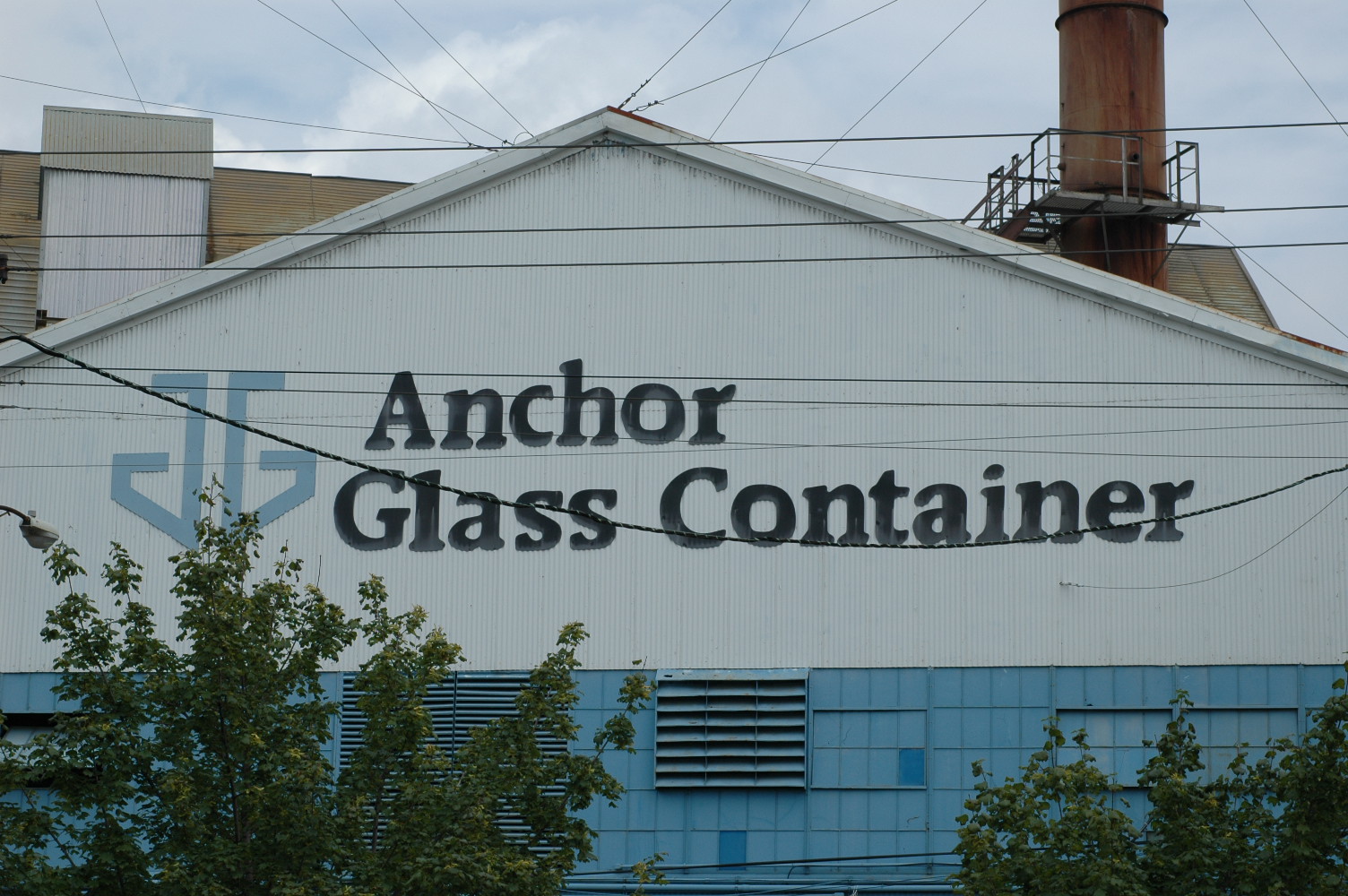
©
COPYRIGHT 2015 ALL RIGHTS RESERVED
|
 |
